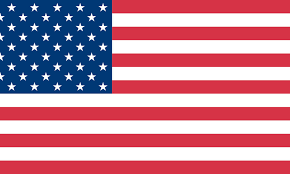How to Print PDF Sewing Patterns at Home?

In the world of sewing and crafting, PDF sewing patterns are super popular because they're flexible, convenient, and offer tons of design options. Imagine not having to wait for a pattern to arrive in the mail – with just a few clicks, you can start your project right away! But to make sure your finished piece looks great, you need to print these patterns correctly. Don't worry; it's not hard! Whether you're new to sewing or have lots of experience, this blog post will show you how to print PDF sewing patterns easily and accurately. You'll get all the tips you need to make your sewing projects fun and successful. So grab your scissors and tape, and let's get started!
What is a PDF Sewing Pattern?
A PDF is a digital file format known as a "Portable Document Format." It can contain text, images, links, and other content while maintaining its layout regardless of the device used to view it. This makes PDFs ideal for sharing and printing documents because they look the same on computers, phones, and tablets.

A PDF sewing pattern is a sewing project guide and template saved in a PDF format. You can download these patterns from the internet and print them at home. They include detailed step-by-step instructions and diagrams, sometimes even video tutorials. After printing, you assemble the pieces, cut them out, and use them as fabric templates. These patterns cater to various skill levels, making them accessible for beginners and advanced sewists alike.
Why Printing PDF Sewing Patterns at Home?
In today's digital world, sewing patterns have smoothly shifted from paper to PDF formats, providing unmatched convenience and customization. Printing PDF sewing patterns has become a vital tool for skilled tailors and sewing fans alike. Whether you're an expert or a DIY newbie, printed PDF patterns at home with easy-to-use and durable printers offer many benefits that improve your sewing experience.
Instant Access
Download and print your sewing pattern right away—no more waiting for delivery! This is perfect for beginners and DIY crafters eager to get started. Instant access means you can begin your project immediately after purchasing, saving valuable time. The convenience of acquiring patterns at any hour of the day makes it ideal for spontaneous crafting sessions.
Easy Customization
Adjust the size and make changes directly on your computer before printing. You can print as many copies as you need, which means experimenting with different designs is a breeze. This flexibility allows you to tailor patterns to fit your specific measurements or preferences, making each project uniquely yours without altering the original template.

Budget-Friendly
PDF patterns are usually cheaper than store-bought versions. Plus, you only need to buy them once and can reuse them again and again, saving you money in the long run. There are often discounts and promotions available online, further reducing costs. Additionally, eliminating shipping fees contributes to overall savings.
Space-Saving
Store all your patterns digitally on your computer or cloud storage. Say goodbye to cluttered shelves and drawers filled with paper patterns—keeping your sewing space neat and organized. Digital storage also ensures that your patterns are easy to find and backed up, providing security against loss or damage compared to physical copies.
These user-friendly benefits make PDF sewing patterns an ideal choice for anyone looking to simplify their sewing projects.
How to Print a PDF Sewing Pattern at home?
Printing PDF sewing patterns at home has greatly changed the way sewing enthusiasts approach their craft. The ability to print patterns on demand provides flexibility and control over your sewing projects. Here's a step-by-step guide to help you print your PDF sewing patterns efficiently from the comfort of your own home.
Step 1. Download the Pattern: Purchase and download your desired sewing pattern. Ensure that the file is in PDF format and saved to your computer.
Step 2. Open the File: Open the PDF file using a PDF reader application like Adobe Acrobat Reader. This ensures accurate rendering of the pattern.
Step 3. Check the Scale: Most PDF sewing patterns include a test square to verify scale accuracy. Measure this square with a ruler to ensure it matches the specified dimensions, guaranteeing that your printed pattern will be the correct size.

Step 4. Select Print Settings: Go to the print dialog box. Set the page scaling option to "Actual Size" or "100%". Avoid any scaling options like "Fit to Page" as they can distort the pattern's size.
Step 5. Print the Pattern: Use high-quality print settings to ensure clear and precise lines. If possible, print on A4 thermal paper for better durability and ease of use.
Step 6. Cut and Assemble: Cut out the printed pages along the designated lines and assemble them according to the pattern's assembly instructions. Tape the pieces together to create a full-size, usable pattern.
By following these steps, you can effortlessly print PDF sewing patterns at home, gaining full control over your sewing projects. This convenient method allows for quick access, precise measurements, and easy pattern assembly, enhancing your overall sewing experience.
What to Consider When Printing a PDF Sewing Pattern?
Printing a PDF sewing pattern involves more than just hitting the print button. To achieve the best results, several factors need to be considered, such as the type of printer and paper used. Proper planning and attention to detail can make the difference between a successful project and a frustrating one.
Printer Type: Your choice of printer can significantly impact the quality of your printed pattern. While standard laser or inkjet printers are commonly used, consider investing in a MUNBYN portable A4 thermal printer. Thermal printers are known for their precision and reliability, making them ideal for detailed sewing patterns.
Print Paper: The type of paper you use is equally important. Regular printer paper can work, but A4 thermal paper, especially from MUNBYN, offers superior thinness and durability, making it easier to handle and assemble patterns.
Test Square Accuracy: Always check the pattern's test square to ensure your printout is to scale. Incorrect scaling can lead to fitting issues, ruining your fabric and effort.
Assembly Instructions: Pay close attention to how the pattern pieces should be assembled after printing. Proper alignment and taping are crucial for maintaining pattern accuracy.
Considering these factors can significantly improve your experience when printing PDF sewing patterns. Utilizing an A4 thermal printer from MUNBYN and its specialized paper can result in higher precision and better pattern handling, ultimately leading to more successful sewing projects.
Conclusion
Printing PDF sewing patterns at home is super convenient, flexible, and cost-effective, making it great for both seasoned tailors and hobbyists. Knowing the benefits and how to print them properly can really improve your projects. It's important to use the right printer and paper. MUNBYN A4 inkless thermal printer and its thin, durable printing paper sheets are top choices for accurate prints. These tools make assembling patterns easier and enhance your sewing experience, keeping your projects organized, efficient, and fun. Embrace digital sewing with PDF patterns and the right gear for a better, smoother process.



